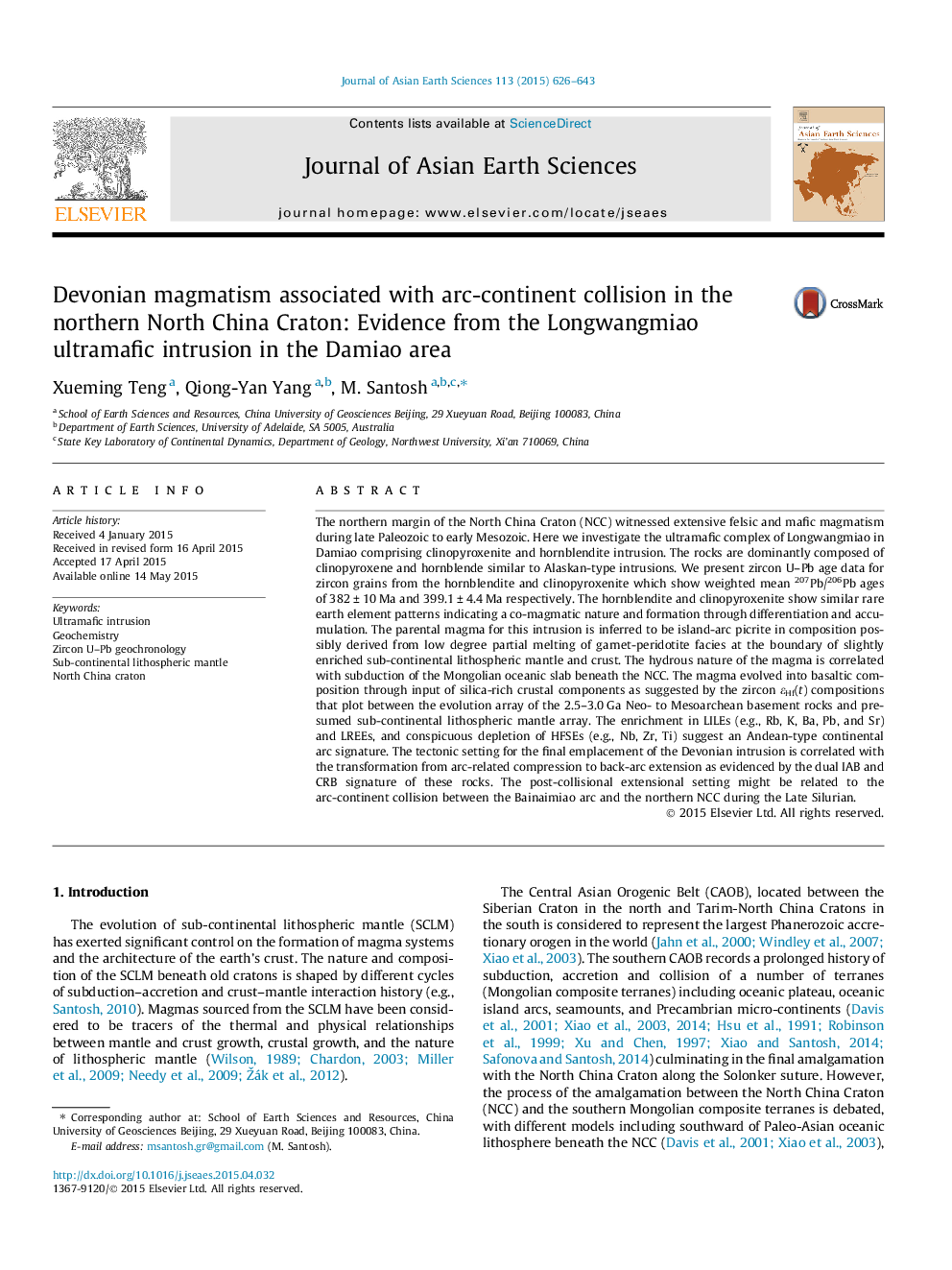| کد مقاله | کد نشریه | سال انتشار | مقاله انگلیسی | نسخه تمام متن |
|---|---|---|---|---|
| 4730322 | 1356749 | 2015 | 18 صفحه PDF | دانلود رایگان |

• Ultramafic bodies emplaced at ca. 399 Ma representing earliest among three magmatic pulses.
• Fractional crystallization and crystal accumulation of anhydrous island-arc picritic magma.
• Magma evolved into basaltic in composition through incorporation of crustal materials in subduction setting.
• Magma emplacement related to arc-related compression to back-arc extension.
The northern margin of the North China Craton (NCC) witnessed extensive felsic and mafic magmatism during late Paleozoic to early Mesozoic. Here we investigate the ultramafic complex of Longwangmiao in Damiao comprising clinopyroxenite and hornblendite intrusion. The rocks are dominantly composed of clinopyroxene and hornblende similar to Alaskan-type intrusions. We present zircon U–Pb age data for zircon grains from the hornblendite and clinopyroxenite which show weighted mean 207Pb/206Pb ages of 382 ± 10 Ma and 399.1 ± 4.4 Ma respectively. The hornblendite and clinopyroxenite show similar rare earth element patterns indicating a co-magmatic nature and formation through differentiation and accumulation. The parental magma for this intrusion is inferred to be island-arc picrite in composition possibly derived from low degree partial melting of garnet-peridotite facies at the boundary of slightly enriched sub-continental lithospheric mantle and crust. The hydrous nature of the magma is correlated with subduction of the Mongolian oceanic slab beneath the NCC. The magma evolved into basaltic composition through input of silica-rich crustal components as suggested by the zircon εHf(t) compositions that plot between the evolution array of the 2.5–3.0 Ga Neo- to Mesoarchean basement rocks and presumed sub-continental lithospheric mantle array. The enrichment in LILEs (e.g., Rb, K, Ba, Pb, and Sr) and LREEs, and conspicuous depletion of HFSEs (e.g., Nb, Zr, Ti) suggest an Andean-type continental arc signature. The tectonic setting for the final emplacement of the Devonian intrusion is correlated with the transformation from arc-related compression to back-arc extension as evidenced by the dual IAB and CRB signature of these rocks. The post-collisional extensional setting might be related to the arc-continent collision between the Bainaimiao arc and the northern NCC during the Late Silurian.
Figure optionsDownload as PowerPoint slide
Journal: Journal of Asian Earth Sciences - Volume 113, Part 2, 1 December 2015, Pages 626–643